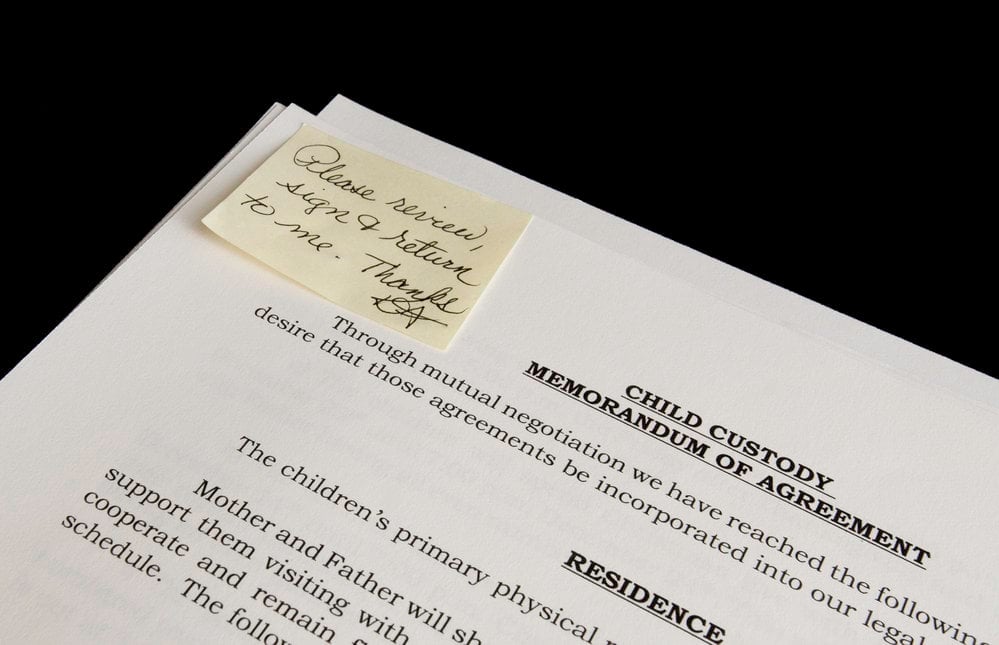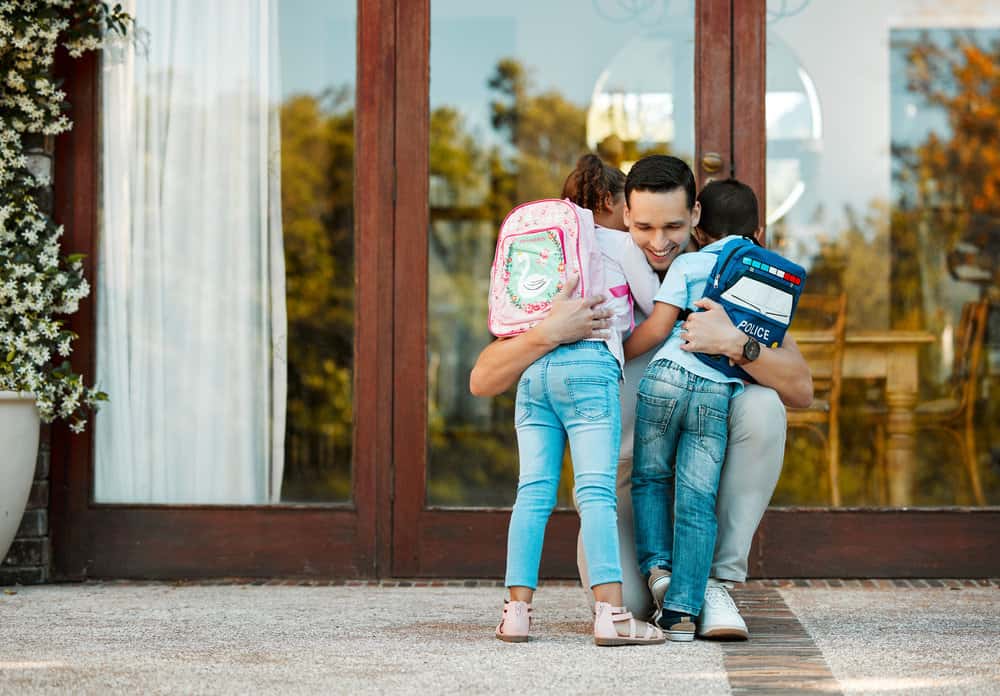Navigating a custody modification case can be a challenging and emotional experience for parents. Understanding the legal system and developing an effective strategy to improve the chances of a favorable outcome is essential. This article aims to provide valuable insights into the steps and considerations involved in winning a custody modification case.
To achieve a successful modification, one must demonstrate a significant change in circumstances since the original custody order, which warrants a review and potential alteration. Examples include changes in the child’s needs, the relocation of one parent, or issues with the current parenting arrangement. It is crucial to gather supporting evidence and present a strong case that the proposed changes benefit the child’s best interests. Doing so requires careful preparation, communication, and potential assistance from legal and professional experts.
Comprehending the legal requirements and procedures is vital, as making errors can negatively impact the case outcome. Effective communication with the other parent, acquiring the right support, and understanding the court’s expectations can increase the likelihood of winning a custody modification case. The following sections offer more in-depth advice and guidance on achieving this important goal.
Understanding Custody Modification Cases
Why Custody Modifications Occur
Custody modification cases arise when one or both parents seek to alter an existing custody order. These changes typically occur due to significant alterations in the circumstances, such as relocation, changes in the child’s needs, or concerns about the child’s safety and well-being.
Legal Grounds for Modification
To win a custody modification case, the party requesting the change must demonstrate that a substantial change in circumstances has occurred. Several reasons may constitute such changes:
- Relocation: One parent may need to move, making the existing custody arrangement challenging to uphold.
- Child’s needs: The child’s needs could change with age or, due to specific requirements, require a different custody arrangement.
- Parental fitness: If one parent’s ability to care for the child is compromised, the court may consider modifying the custody order.

Types of Modification: Custody and Visitation
Custody modifications can involve both physical custody and legal custody. Physical custody refers to the time the child spends with each parent, while legal custody pertains to the right to decide on the child’s behalf. Modifications can result in the following outcomes:
- Change in primary custody: The court may change which parent the child primarily resides with, especially if it is in the child’s best interest.
- Joint custody: The court might alter the existing arrangement to grant both parents equal time and decision-making authority.
- Visitation adjustments: Changes in visitation schedules may also occur, ensuring that the child’s needs and interests are prioritized.
To navigate a custody modification case, it is crucial to understand the various circumstances, legal grounds, and potential outcomes. Parents seeking modifications should consult with legal professionals to ensure the best possible outcome for their children.
Building a Strong Case
Gather Relevant Evidence
To build a strong custody modification case, it is vital to gather relevant evidence. This includes school records, medical records, and proof of any changes in circumstances for the children or parents. Collecting this evidence is crucial, as it will provide the court with solid proof to help them make an informed decision. Maintaining organized records, such as a calendar or journal, can also be useful in tracking parenting time and any disputes that may arise.
Highlight Positive Parenting Skills
Another critical step in building a strong case is highlighting the parent’s positive parenting skills. This can be achieved by gathering proof of the parent’s involvement in the children’s lives, such as attendance at school events, extracurricular activities, or regular communication with teachers. Additionally, demonstrating the parent’s commitment to providing a stable home environment—through proof of consistent employment, appropriate living conditions, and mental and emotional stability—will help the judge determine if it is in the child’s best interests to adjust the custodial arrangement.
Show Willingness to Co-Parent
Lastly, the parent should be willing to co-parent with the other party. The court values an individual’s ability to communicate effectively and healthily resolve conflicts, ultimately impacting the children’s well-being. Showing willingness to compromise and work collaboratively in the child’s best interests can sway the judge’s decision in a custody modification case.
The steps to fostering effective co-parenting include attending family court-ordered mediation, open communication through phone call logs, emails, or text messages, and developing a parenting plan. Displaying such willingness strengthens the case, as the court wants to ensure a positive outcome for the children and the parents involved.
By following these guidelines and focusing on the critical aspects of evidence, positive parenting skills, and co-parenting, a parent can build a strong case to petition the court for changes in their custody arrangements. Proper preparation and representation in family court are crucial for a successful outcome in a custody modification case.

Focusing on Your Child’s Best Interests
When approaching a custody modification case, it is crucial to center your argument on your child’s best interests. This includes their well-being, stability, education, and emotional and social development.
Well-being and Stability
When discussing child custody, it is essential to highlight evidence of the child’s well-being and stability. This can involve:
- Providing a stable, loving home environment
- Ensuring consistent routine and structure
- Taking responsibility for the child’s physical, emotional, and medical needs
- Making decisions that prioritize the child’s well-being
- Respecting the relationship between the child and the other parent
Consider the following table to outline key factors:
| Factor | Description |
|---|---|
| Physical Health | Adequate food, clothing, and medical care. |
| Safety | A secure, hazard-free living space. |
| Consistency | Routine schedules and regular interaction with both parents. |
Education
A child’s education is a significant factor in custody modification cases. Addressing this aspect includes:
- Being involved in the child’s education, such as attending parent-teacher conferences and school events
- Supporting the child’s academic development and interests
- Encouraging communication between the child and school staff
- Assisting with homework and extracurricular activities
- Ensuring the child attends school regularly
Emotional and Social Development
A child’s emotional and social development is another essential component that should be considered. To show your support in this area, you can:
- Encourage the child to develop healthy relationships with peers
- Foster appropriate emotional expression and communication skills
- Support the child’s sense of identity and self-esteem
- Maintain open and respectful communication with the other parent
- Create opportunities for activities, hobbies, and social interaction
You can strengthen your position in a custody modification by demonstrating that you prioritize your child’s best interests in these key areas. Always remember that the court’s primary concern is ensuring the well-being and development of the child involved.
Working with a Family Law Attorney
Choosing an Experienced Attorney
When attempting to win a custody modification case, selecting an experienced family law attorney is crucial. They should have expertise in custody cases, divorce, and visitation rights. By choosing a knowledgeable attorney, the non-custodial parent increases their chances of achieving a favorable outcome. To find a qualified lawyer, consider their success rate, certifications, and overall reputation.
Developing a Winning Strategy
Working closely with a custody attorney, the parties must develop a winning strategy to modify visitation rights or custody successfully. An experienced family law attorney can help identify the case’s strengths and weaknesses and gather the necessary evidence and documents to support the desired outcome.
A winning strategy may involve demonstrating a significant change in circumstances since the last custody order, such as improving the non-custodial parent’s living situation or the child’s preference. The attorney might also suggest involving a mediator to resolve disputes and reach a mutually beneficial agreement. The non-custodial parent and their attorney can create a strong argument for obtaining a custody modification.
Frequently Asked Questions
How can I increase my chances of winning a custody modification case?
To increase your chances, gather strong evidence supporting the need for modification, such as a change in the child’s living situation or the other parent’s inability to provide proper care. Also, demonstrate your capability to provide a stable and nurturing environment for the child. Maintain a calm and respectful demeanor during court proceedings to present yourself as level-headed and responsible.
What factors do judges consider in custody modification cases?
Judges focus on factors that determine the child’s best interest:
- The child’s physical and emotional well-being
- Each parent’s ability to provide adequate care
- The current living situation and any significant changes
- The child’s preference, depending on their age and maturity
- Each parent’s willingness to cooperate and communicate with one another regarding the child’s needs
What types of custody modifications can be requested?
There are two primary types of custody modifications:
- Physical Custody Modifications: Changes involving where the child primarily resides, such as requesting primary custody or altering the previously established visitation schedule.
- Legal Custody Modifications: Changes in a parent’s authority to make significant decisions concerning the child’s upbringing, like education, healthcare, and religious upbringing.
How long does a custody modification case usually take?
The duration of a custody modification case varies depending on the situation’s complexity and the court’s schedule. It can take anywhere from a few weeks to several months. In cases where urgent intervention is required, such as when the child’s safety is at risk, temporary modifications can be requested and granted faster.
Can a custody modification be reversed or changed?
Yes, a custody modification can be reversed or changed, but only if substantial evidence demonstrates that another modification is necessary for the child’s best interest. As with the initial modification, collect strong evidence and present it accordingly to the court, maintaining a cooperative and respectful attitude.

